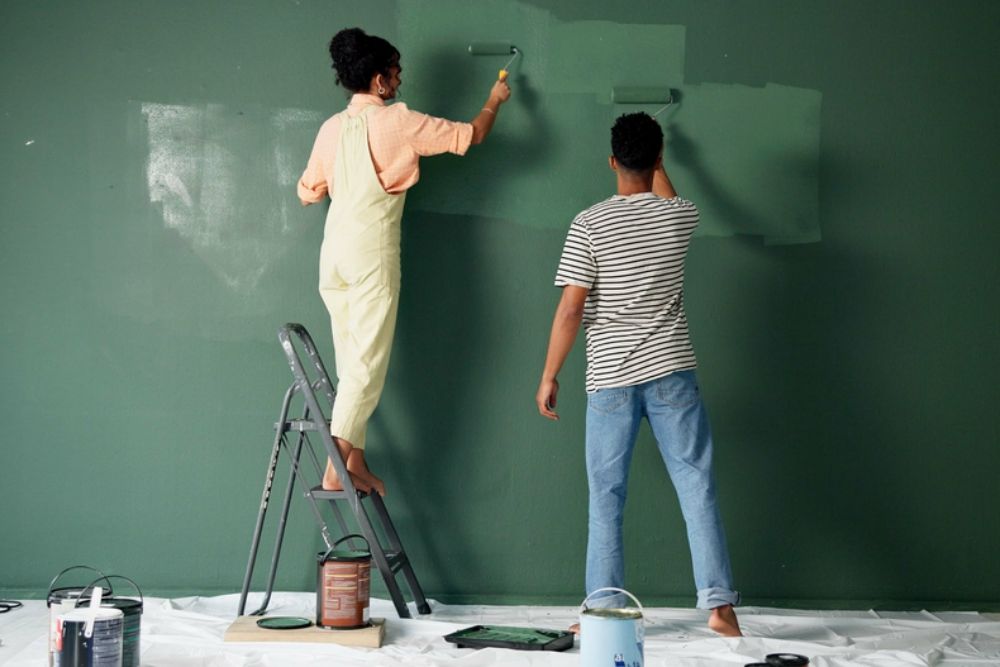Painting your home—inside or out—can give it an instant facelift, improve curb appeal, and even boost its value. But whether you’re freshening up a couple of rooms or taking on the whole exterior, painting costs add up quickly. Between supplies, labor, and potential repairs, you might be looking at a hefty bill.
The good news is that with some smart planning and a few hands-on efforts, you can cut costs significantly without sacrificing the final look. Here’s how to save money on house painting while still getting professional-looking results.
Do the Prep Work Yourself
A big chunk of painting costs comes from the time it takes to prepare the space—not the painting itself.
-
Move furniture, take down curtains, and remove switch plates yourself.
-
Clean walls or siding thoroughly to remove dirt and mildew.
-
Patch holes or cracks with spackle and sand them smooth.
Doing the prep work means painters (or you) can start right in on the main job, which reduces labor hours and the total cost.
Choose Lighter or Similar Colors
Drastically changing colors—like going from dark brown to light gray—often requires multiple coats of primer and paint.
-
Staying close to your existing shade means fewer coats, saving on paint and time.
-
Lighter neutral colors also hide imperfections better and require less frequent touch-ups, lowering long-term maintenance.
Being strategic with your color choice makes the whole job simpler and more affordable.
Shop Around for Estimates
If you’re hiring a professional, always get at least three estimates.
-
Ask painters to break down costs by labor, materials, and additional fees.
-
Don’t just go for the lowest price—check reviews and past work to ensure quality, since fixing sloppy jobs later costs even more.
Tell contractors if you’re getting multiple bids. Some will lower prices to secure your business.
Time It Right for Off-Season Discounts
Painters are busiest in spring and summer, which often means higher prices.
-
If your climate allows, schedule your exterior painting for late fall or early spring. Many painters offer discounts during slower months.
-
Interior painting can often be done year-round—contractors might offer deals during winter when outdoor work slows down.
Being flexible with timing can lead to significant savings.
Buy Your Own Paint and Supplies
Some contractors mark up paint and supply costs. Buying your own gives you more control over the budget.
-
Watch for sales at local hardware stores—many run big paint promotions around holiday weekends.
-
Ask if your contractor can use paint you supply. Most are fine with this, and it often leads to better quality because you can pick a top-tier brand.
Just make sure you calculate the right quantity to avoid costly runs back to the store or ending up with too much left over.
Consider a Partial Professional Job
You don’t have to choose all or nothing. Many homeowners hire pros for tricky areas—like ceilings, tall stairwells, or detailed trim—and do easier walls themselves.
-
This hybrid approach keeps your project looking professional where it matters most, while saving you money on labor by tackling simpler spaces on your own.
It’s a balanced way to get quality results without paying full-service prices.
Limit Fancy Techniques and Finishes
Specialty finishes like textured walls, faux finishes, or intricate multi-color designs take more time and skill, driving up labor costs.
-
Sticking with simple, single-color coats makes the job faster and far less expensive.
-
You can always add personality with inexpensive décor, artwork, or accent pieces later.
Simple doesn’t have to mean boring—it often looks cleaner and more timeless.
Invest in Quality Paint to Reduce Long-Term Costs
It’s tempting to buy the cheapest paint, but low-quality paint often requires more coats and fades faster.
-
High-quality paint covers better, lasts longer, and resists stains, meaning you won’t have to repaint as soon.
-
Over time, it’s often the more economical choice.
Read reviews and talk to experts at your local paint store about which product gives the best value for your specific needs.
Take Care of Small Repairs Yourself
Painters often charge extra to fix minor issues like small drywall holes, loose siding, or damaged trim.
-
Doing these repairs before they arrive saves money and gives a smoother final result.
-
Use a basic spackle kit for small holes and sand smooth. For exterior wood, fill cracks with exterior-grade wood filler.
A few inexpensive materials and a little effort go a long way.
Clean Up Afterward Yourself
Most painters include cleanup, but if you handle this step, some will reduce their fees.
-
Pull up drop cloths, reinstall switch plates and hardware, and put furniture back in place.
-
For outside jobs, collect paint chips and sweep walkways.
Ask your contractor upfront if doing your own cleanup could lower the cost.
Painting your home can refresh its look and feel dramatically, but it doesn’t have to blow your budget. By being strategic—doing your own prep, carefully choosing colors, shopping for deals on paint, and knowing when to hire help—you can save hundreds or even thousands on your project.
The best part? With thoughtful planning and some hands-on work, you’ll enjoy a beautiful, freshly painted home that didn’t break the bank—and you’ll feel even prouder knowing how much you saved.


